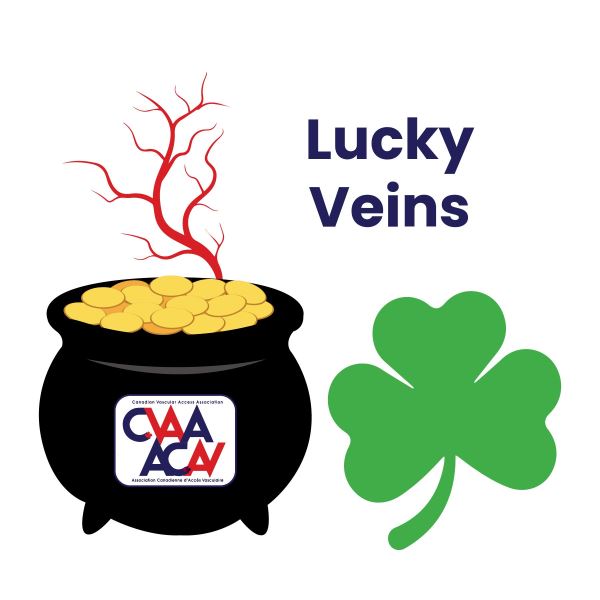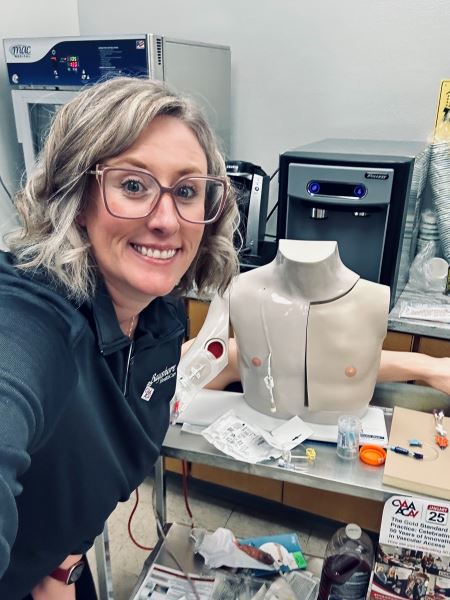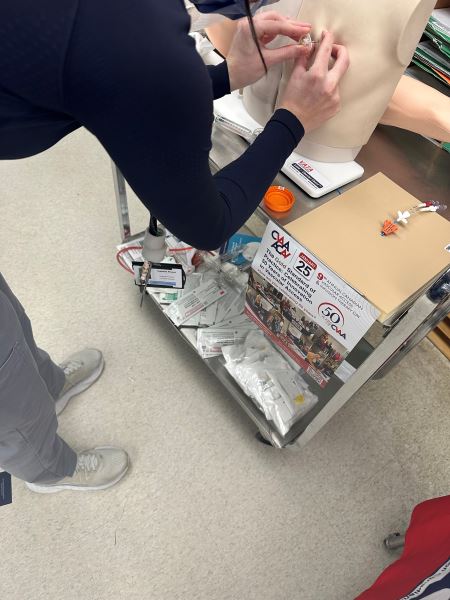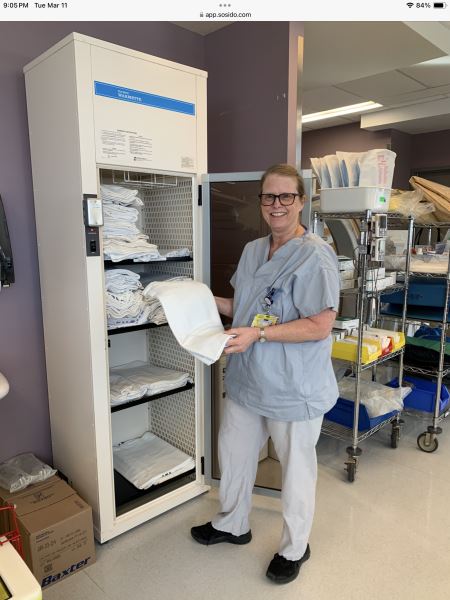
Luck O' The CVAA To You!
This is the month of luck and patients are lucky to have CVAA members and especially CVAA(c) Certified members as their clinicians! How do you make sure your patient's veins are 'lucky veins'? Share your lucky tips with CVAA for prizes!
- what are your lucky "one-stick success" methods?
- what makes you feel like you found the "pot of gold" at the end of an insertion?
- we know it's not just luck, but skill and experience - how do you gain vascular access/infusion skill in your practice?
Email cvaa@cvaa.info or post on social media using this hashtag #CVAALuck by March 31 to have your name entered into a prize draw!
Bonus points for photos showing your luck!
And log into Sosido Q&A Members Forum (CVAA members have access - need help, email cvaa@cvaa.info) to answer this month's question:
Sosido Q: What is your “lucky” tip for one-tip success?
Submissions:
Katie Jeffery (Lively, ON)
Using a warm cloth in community care was always my go to for improving vascular access and one stick success!
Kimberlei Dool (Chilliwack, BC)
4 little tricks
1) warm damp cloth in a plastic bag ( dont want the arm moist) - wrap the arm for 3 min
2) Vein viewer for the little tiny arms.
3) The smaller the cathalon the better for the tiny arms too
4) not tying the tournique too tight. Often find the vein with the tournique on , mark the spot and then release it and proceed - this will often prevent bruising and the delicate veins from " Blowing"
Katelyn Cooper (Lively, ON)
In my practice, ensuring 'lucky veins' means taking a personalized and patient-centred approach. I always assess the patient's vein condition thoroughly before attempting insertion, making sure to use a tourniquet to highlight potential veins and ensuring proper hydration where possible. My 'one-stick success' method involves taking the time to palpate the vein gently, ensuring it's the right size and location for insertion. The 'pot of gold' moment is when the insertion goes smoothly, and I see the patient feeling relieved with minimal discomfort.
To keep my skills sharp, I continuously work on honing my technique by attending workshops, reviewing best practices, and learning from my more experienced colleagues. Sharing knowledge with others and staying updated with new techniques also enhances my practice.
I don’t have a photo showing my 'luck,' but I do have photos of me teaching these strategies to others!


Pamela Darby (Vernon, BC)
Set yourself up for success. Don't rush. Move furniture if necessary. Raise the height of the bed. Lower the side rails. Have a helper hold the arm if patient can't, or put the bedside table by bed to rest arm on. Assess the entire arm and choose the best vein. If using ultrasound, have it in your line of vision so you don't have to twist.
Joanne Charbonneau (Verdun, QC)
To set up for successful IV insertion the most important thing is to TAKE THE TIME. Quality over quantity!
Clear your mind of all the other tasks to do, focus on the patient, do a good assessment, speak to the patient so he feels confident, and then use all the tools in your tool boxe... Good position of the patient, with ou without a tourniquet, warm compresses, lower the arm...
Your toolbox must almost include vein visualization technology. To get it first shot might also means calling another nurse to do the insertion with an ultrasound if you're not trained.
Kerry McDonald (Pembroke, ON)
My one stick success methods include talking to the patient about their previous experiences, what worked,what didn't and finding out what concerns they have. If they have a spot that is always a success, I always look there and assess. Next I use warmth on the limb, and if they are chilly, I give them a warm blanket too. I keep the limb below the level of their heart and I insert from a position of comfort. I chose a catheter gauge that the vein can accommodate and is appropriate for the therapy. The two key elements are patient centred care and the investment of time.
My pot of gold is when I am able to initiate the intravenous with minimal discomfort, excellent blood return and a smile on the patient's face.
I maintain skill, experience and competency by continuous education, grabbing practice opportunities and participating in professional practice organizations.
I don't have pictures of "my luck", but I do have pictures demonstrating continuing education and getting a warm blanket!

Wendy Goldman (Salmon Arm, BC)
Love seeing all these great ideas!
I like using warm flannels - on both arms (even if I know I can't use one arm) as it also helps the patient to feel cozy and relaxes and thus vasodilated.
My favourite "trick" when I can't find a vein is to flip their arm up (ie fully bend at the elbow, palm to shoulder) and look at the posterior arm. Often there's a nice big vein running down that posterior surface which is not visible if the elbow is extended, regardless of whether the forearm is palm up or palm down. I also like to bring a friend along when accesing that vein as it can be a bit awkward!
Gillian Weppler (Waterloo, ON)
My lucky "one stick" method entails all the little things adding up to make a big difference. These little things include building rapport with the patient, asking if they'd like to share anything about their previous IV experiences, ensuring adequate light, proper bed/patient/limb positioning, warmth, and technique application.
I feel like I've hit that pot of gold when the patient sighs with relief and says something along the lines of, "Thank you so much for getting it on the first try!"
I strongly believe in promoting Vascular Access Specialty nurses supporting new learners to learn strategies to maximize success, promote best practices, and use learning aids (such as a vein pad) prior to real-stick insertions. This approach at my place of employment has been shown to increase positive outcomes and increase first-stick success!